Accessory Reviews
OptiShot Golf Simulator: Editor Review
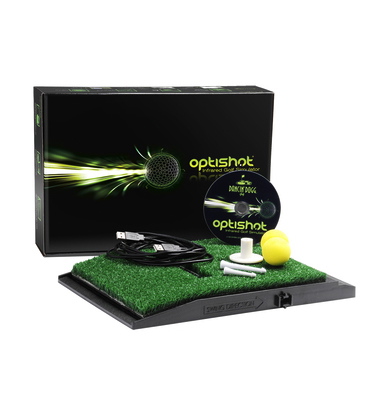
Pros: OptiShot is simple to install, set up and use. It’s also extremely portable. And because it can be used with a golf ball, foam ball or no ball, it can make just about any space where you can swing a club a golf space. Its infrared sensors are also pretty accurate when it comes to measuring clubhead speed and point of contact on the face (heel, center, toe), and short game shots and putting were more intuitive than we expected. Visually, the course layouts are attractive, as are the sounds of the birds and birdie claps.
Cons: OptiShot couldn’t read my driver swings and gave distorted results with my 3 wood swings. While its settings allowed me to designate my longest iron to go a “driver distance,” not being able to pull the big stick was a disappointment. With irons and wedges the readings were in the right range most of the time. But here and there, OptiShot would fail to read a shot or give a result that I knew was way off.
The Takeaway: OptiShot is not a launch monitor, so it doesn’t track the ball — its infrared sensors track the club slightly before and after impact. So if a user is expecting a FlightScope- or Trackman-like experience (launch monitors that can cost anywhere from $10,000 to $25,000), they’re not going to get it from something that costs $399. But if users understand what OptiShot does and its limitations, it can be an enjoyable experience.
It’s great fun for golfers who want a golf-like experience in the winter, at night or on bad weather days, and birdies still feel like birdies. But for really serious golfers, it will probably serve as an arcade or party game, not an improvement tool.
————————————————————————————————————————–
Overview
At $399, OptiShot is a fraction of the cost of most launch monitors — it’s also about the cheapest golf simulator on the market that provides an actual golf experience. Almost every option can be customized, including weather, course conditions and equipment options. Even golfers like me who have actually played the real versions of some of OptiShot’s courses will find themselves immersed into their simulated rounds at one of OptiShot’s 11 free replica courses, including Bethpage Black and Torrey Pines (North and South). For an additional $49.95, golfers can add one of OptiShot’s 14 premium replica courses, which include Pebble Beach, Whistling Straits, St. Andrews, TPC Sawgrass’ Stadium Course and others.
For many recreational golfers, especially those in cold climates, OptiShot will be a godsend. It’s two rows of infrared sensors fire about 10,000 pulses per second and bounce off the sole of a golfer’s club slightly before and after impact, measuring clubhead speed, face angle and path. OptiShot’s software takes over from there, extrapolating launch conditions from those variables to give golfers a reasonably accurate on-screeen illustration of what their shot did.
Optishot’s infrared sensors are the launch monitor’s biggest strength, but for serious golfers, they are also its biggest downfall. Since OptiShot is not measuring the ball like other launch monitor systems, it presumes that every shot is hit pretty much on the screws. For this reason, OptiShot doesn’t take into consideration gear effect, the twisting of the club head that occurs on off center hits and contributes to shot shape. That means that every swing on OptiShot has some level of error, but that’s something the company is aware of and doesn’t try to hide.
“We are not a launch monitor, and we don’t pretend to be a launch monitor,” says Brandon Theophilus, CEO of Dancin Dogg, the company behind OptiShot. “Trackman and FlightScope — both of those products are measuring the ball. We’re not. We’re measuring the club face through the impact area.”
Despite the short comings of its infrared sensors, Theophilus, a 3 handicap, says that there’s plenty skilled golfers can learn from OptiShot. Even though OptiShot doesn’t know if he hit a shot fat or thin, he does, and can adjust his expectations accordingly.
Theophilus is right. Golfers of all levels can enjoy OptiShot. Many golfers will even learn from it. But different golfers have different thresholds for how much inaccuracy they can tolerate. For serious golfers, OptiShot will toe that line.
Set up
Setting up OptiShot is a breeze. The $399 package includes a 14-by-10-inch swing pad, replaceable turf, the OptiShot software, a 10-foot USB cable, two foam practice balls and well-fitting tees. Add a PC with Windows Vista, 7 or 8, and that’s all that’s needed to start using OptiShot.
Setup goes something like this — insert the disc and plug in the swing pad. That’s about it. Golfers will need a place where they can swing a club, but based on their preference, they may not even need a net. OptiShot can be played without a ball, which means golfers can make air swings over the unit’s infrared sensors and still play and practice golf.
This feature came in particularly handy for me, as the GolfWRX hitting bay isn’t tall enough to safely contain full wedge shots. I used the foam balls on those occasions, which I found to be as accurate as real balls. I also experimented with the “no-ball” option, which wasn’t as accurate for me. Whether that was the OptiShot’s fault or my inability to make a consistent swing without a ball present, I’m not sure.
Ease of Use
It didn’t take me long to get very proficient with OptiShot. There’s a lot of different options available, but the screen stays uncluttered by neatly organizing those options in the four corners. All a golfer really has to do is make sure the swing pad is lined up to the target and that they enter their clubs specifications (loft, offset and length) and they can be on their way to playing some of the world’s best courses with up to three of their friends.
I found the distances my shots flew to be accurate to a range of about 10 yards (compared to FlightScope) most of the time. If for some reason the shots are not flying the proper distances, users can boost their “swing speed percentage” for each club, which will make the ball fly longer or shorter to dial in exact distances.
Short game and putting, the down fall of most simulators, was surprisingly intuitive. It’s a stretch to say the rough and bunkers on OptiShot are similar to real golf, but they provide some resistance to the ball that makes them a penalty in game play. There’s also a putting grid on the green that shows breaks and elevation changes. I didn’t make as many putts as I’m used to on some video games, but if I made a good read and paired it with a good stroke, the ball went in with a slightly higher frequency than the course.
Changing clubs and alignment are done with keyboard arrows, which is fast and convenient, and lie type, distance, elevation change, wind speed, wind direction, club selection and shot trajectory are prominently displayed on the bottom of the screen. There’s also a pop out section on the upper left section of the screen that shows club head speed, face angle, distance, height, tempo and contact, which can help some golfers understand what could have been the cause of a certain type of shot.
Accuracy
OptiShot advertises its accuracy range as being within 2 mph of club head speed, 1.5 degrees of face angle and 1.9 degrees of swing path. For the majority of shots, I found that those tolerances were accurate. But I hit plenty of squirrely shots with OptiShot that did not match up with our in-house FlightScope system.
To avoid a possible interference between the OptiShot’s infrared sensors and FlightScope’s Doppler radar field, I ran them separately, hitting 20 six irons on each. Many shots turned out similar, but the range was much wider on OptiShot than it was with FlightScope. OptiShot recorded face angle readings of as much as 10-degrees closed and 8-degrees open, while FlightScope’s range was between 0.5-degrees closed and 2.2 degrees opened — a huge variance.
There was also the issue of OptiShot not being able to pick up any shots hit with my drivers, which is understandable given the nature of its infrared sensors — they need a smooth, predictable surface to give golfers accurate results. I picked the plainest-soled drivers I had in house — Callaway’s X Hot and Cobra’s AMP Cell Pro — neither of which worked. I also went with the simplest-soled 3 wood I had, a Callaway X Hot Pro, which gave me hugely distorted results — 90-degree angle hooks and slices that didn’t match up to my FlightScope sessions.
OptiShot sells its affordable OptiStix driver for $49.95, which the company says works well with the system. But will golfers who spend hundreds of dollars and dozens of hours tuning their driver embrace a system that doesn’t allow them to use it?
Final thoughts
Although the ability to play some of the world’s best golf courses in the dead of winter was extremely satisfying to me in late portion of a brutal Michigan winter, I gravitated to the practice feature, which allowed me to practice certain shots on golf courses over and over. I also liked the range option in practice mode, which allowed me to hit shots at six different targets. There’s even a “par-3 tee” option, which takes any hole and turns it into a par 3 so that it can be played in spaces where users can’t swing longer clubs.
“All of us are trying to do more with less in our lives with respect to golf,” says Theophilus. “We’re trying to do our part with folks to help them play more golf in a shorter period of time.”
OptiShot certainly is a way for golfers to squeeze more golf into their lives. For golfers like me in cold climates, OptiShot can extend a season by almost half a year. But everyone who’s in the market for a simulator or launch monitor will have to ask themselves a question. Is this thing worth $400?
For golfers who want to play as much golf as possible and are willing to deal with inaccurate readings at times, the answer is yes, and OptiShot will be everything they’ve always hoped for. But if a golfer wants to hit balls with their own driver and get as realistic feedback as possible, they’re better served spending time at an indoor facility or on a Doppler system.
- LIKE70
- LEGIT8
- WOW2
- LOL4
- IDHT11
- FLOP16
- OB4
- SHANK14
Accessory Reviews
Insider photos from Tiger Woods’ launch event for his new “Sun Day Red” apparel line
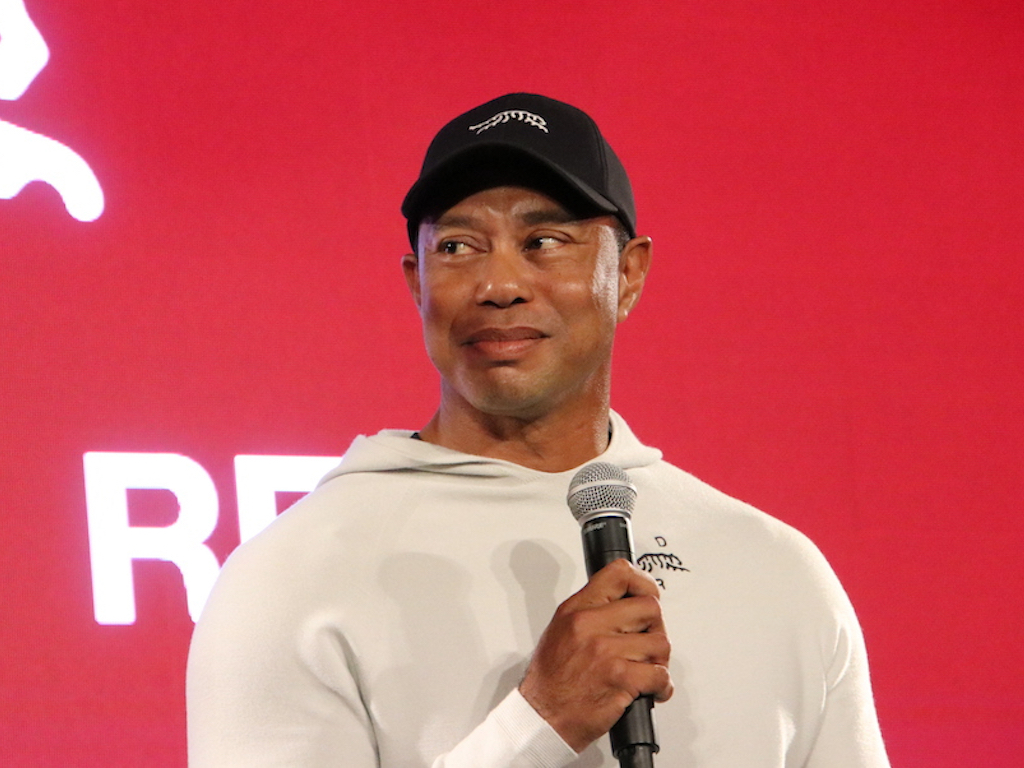
On Monday evening, inside the swanky, second-story “Coach House” event center in the Palisades Village, just minutes down the road from the 2024 Genesis Invitational at Riviera Country Club, Tiger Woods and TaylorMade officially announced their new apparel/footwear/accessory line, called “Sun Day Red.”
The Sun Day Red website officially launched on Monday night during the event, and the products are set to go on sale starting May 1.
The “Sun Day Red,” or “SDR” name will be self-explanatory for most golf fans, since he’s been wearing a victory-red shirt on Sunday’s for his entire professional career, but Woods explained the meaning of Sun Day Red at the launch event:
“It started with mom. Mom thought – being a Capricorn – that my power color was red, so I wore red as a junior golfer and I won some tournaments. Lo and behold, I go to a university that is red; Stanford is red. We wore red on the final day of every single tournament, and then every single tournament I’ve played as a professional I’ve worn red. It’s just become synonymous with me.”
The Sunday Red outfit has worked to perfection for his 82 PGA Tour victories, including 15 majors, so why not make an entire apparel line based on the career-long superstition?
As I learned at Monday’s launch event, the new Sun Day Red line includes much more than just clothing. To go along with a slew of different golf shirt designs and colorways, there were also windbreakers, hoodies, shoes, hats, headcovers, ball markers and gloves on display.
The upscale event was hosted by sports media personality Erin Andrews, with special guests David Abeles (CEO of TaylorMade) and Tiger Woods himself.
As explained by Abeles, the Sun Day Red brand is an independently-run business under the TaylorMade umbrella, and is based in San Clemente, California (rather than Carlsbad, where TaylorMade headquarters is located), and it’s run by a newly-formed, independent group. Brad Blackinship, formerly of Quiksilver and RVCA, is the appointed president of the new brand.
As for the logo itself, obviously, it’s made to look like a Tiger (the animal), and is comprised of 15 tiger stripes, which correspond with Woods’ 15 major championships. While the logo may need a 16th stripe if Woods adds a major trophy to his collection, it makes perfect sense for the time being.
The golf/lifestyle line is meant to combine premium precision and athletic comfort, while still having plenty of wearability and style off the course. Like Woods said on stage at the event, he wants to be able to go right from the course to dinner wearing Sun Day Red, and that was exactly the aesthetic on display at the event on Monday.
Following the official announcement from Woods and Abeles, they revealed multiple pieces of clothing, accessories and footwear for the event-goers to ogle (and photograph). Check out a selection of product/event photos below, or head over to our @GolfWRX Instagram page for video coverage…OR, head into our GolfWRX Forums for even more photos and member discussion.
Enjoy this exclusive look at Tiger Woods’ new Sun Day Red apparel lineup below.


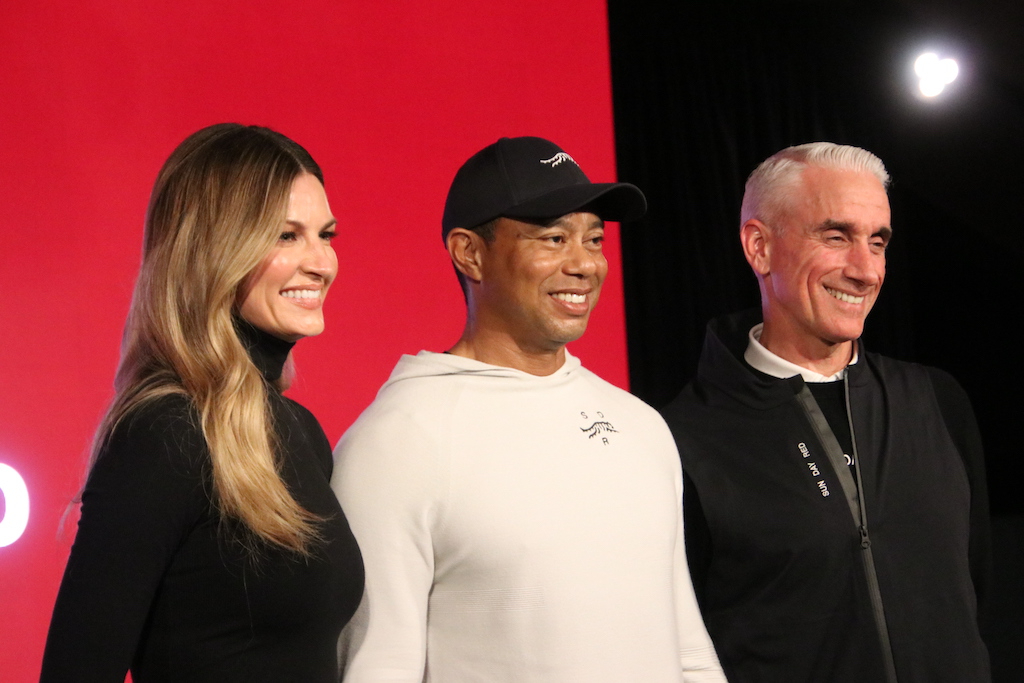
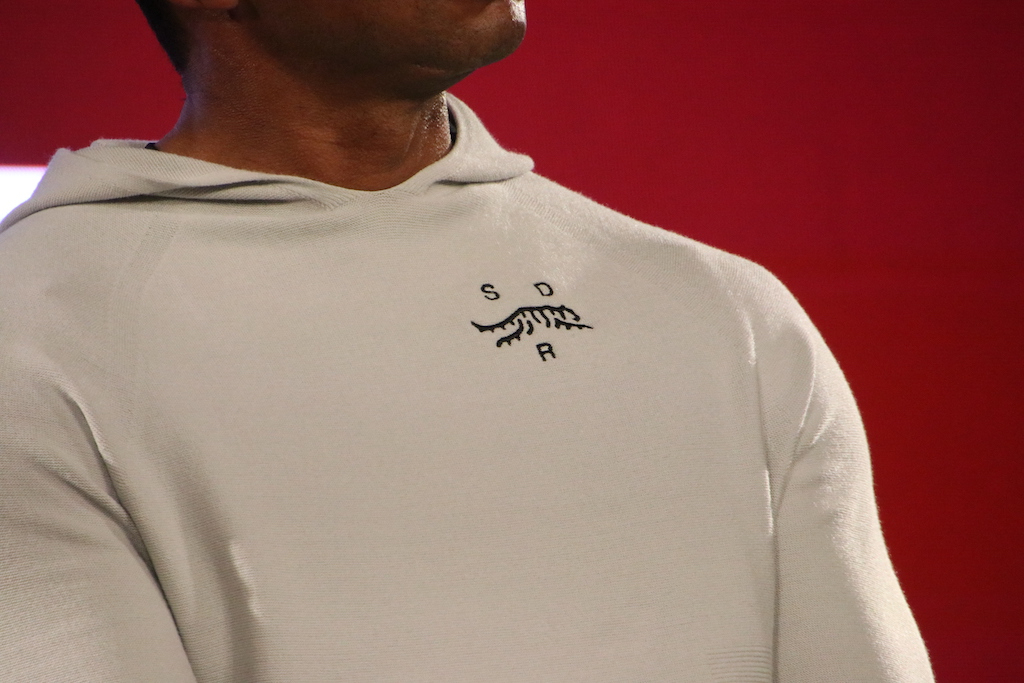

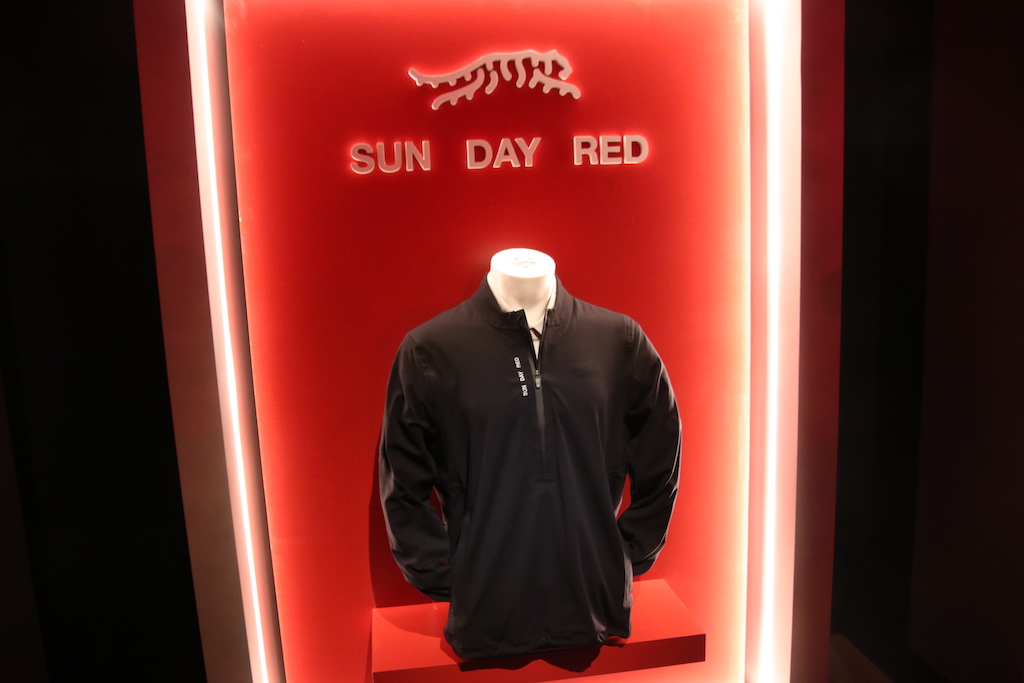
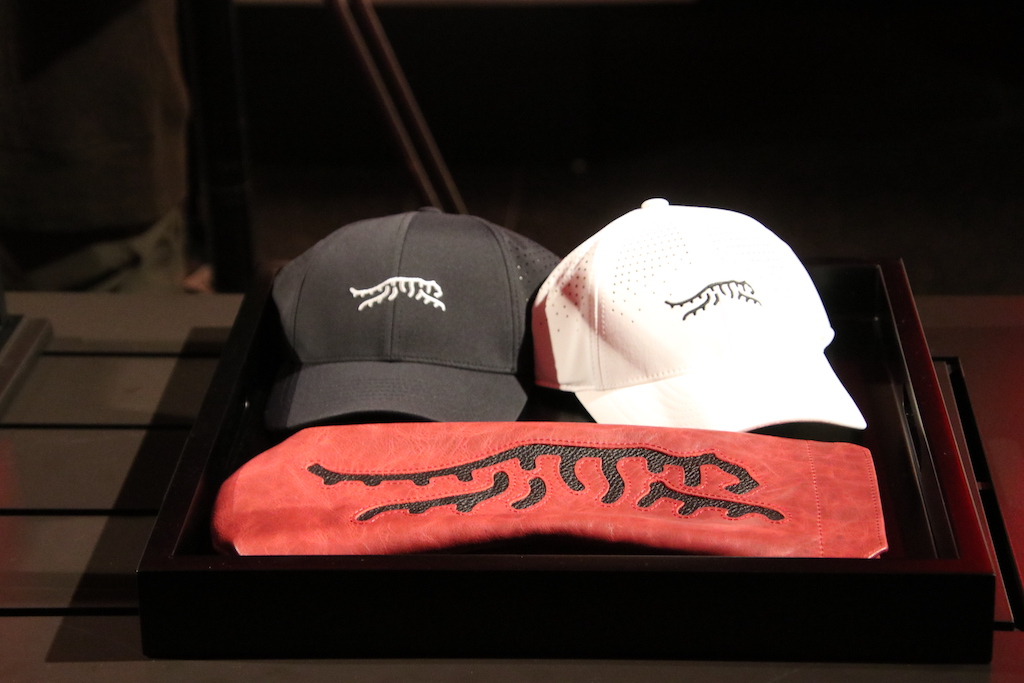

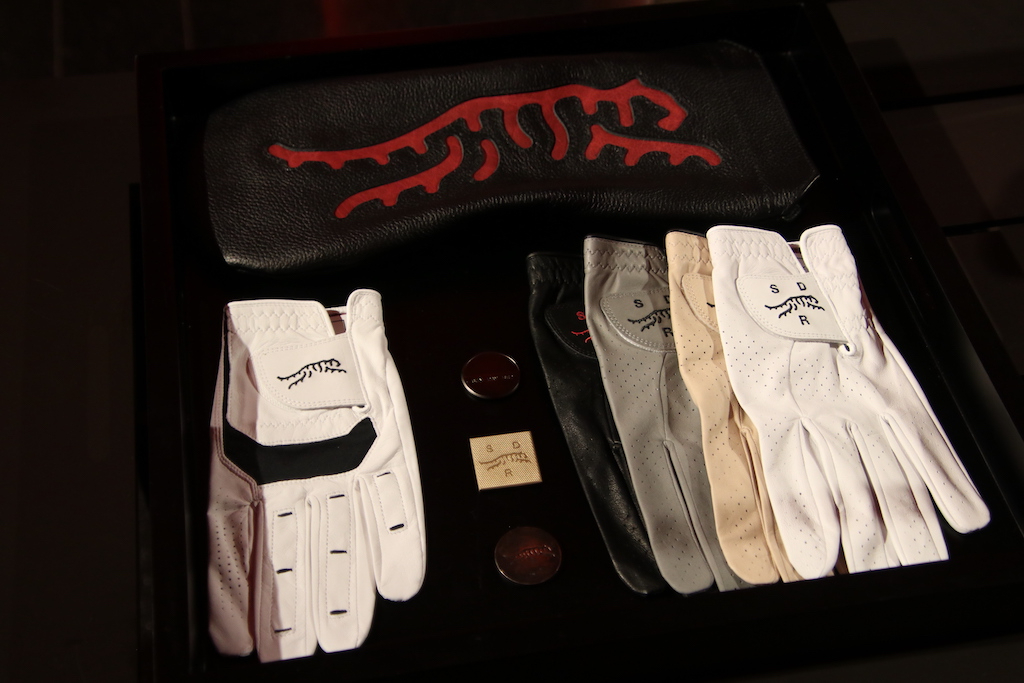
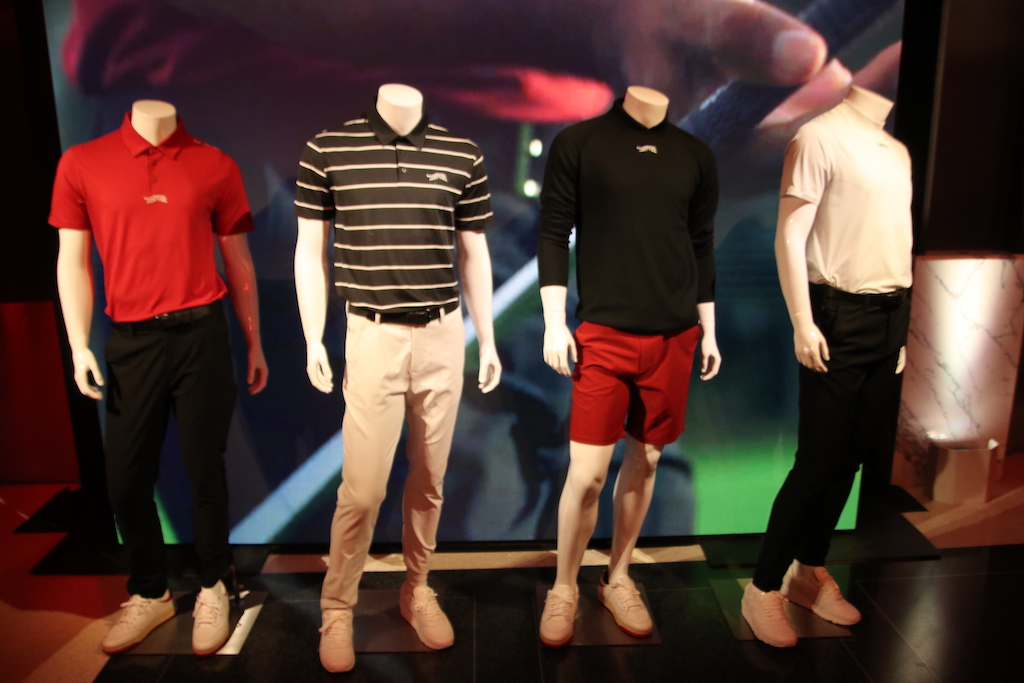
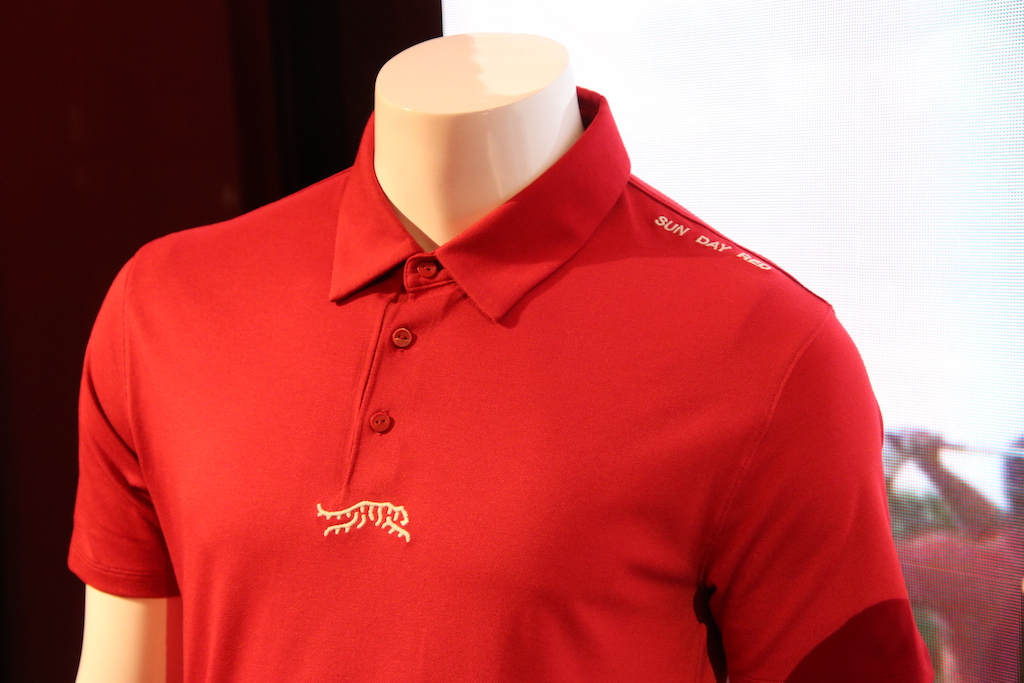
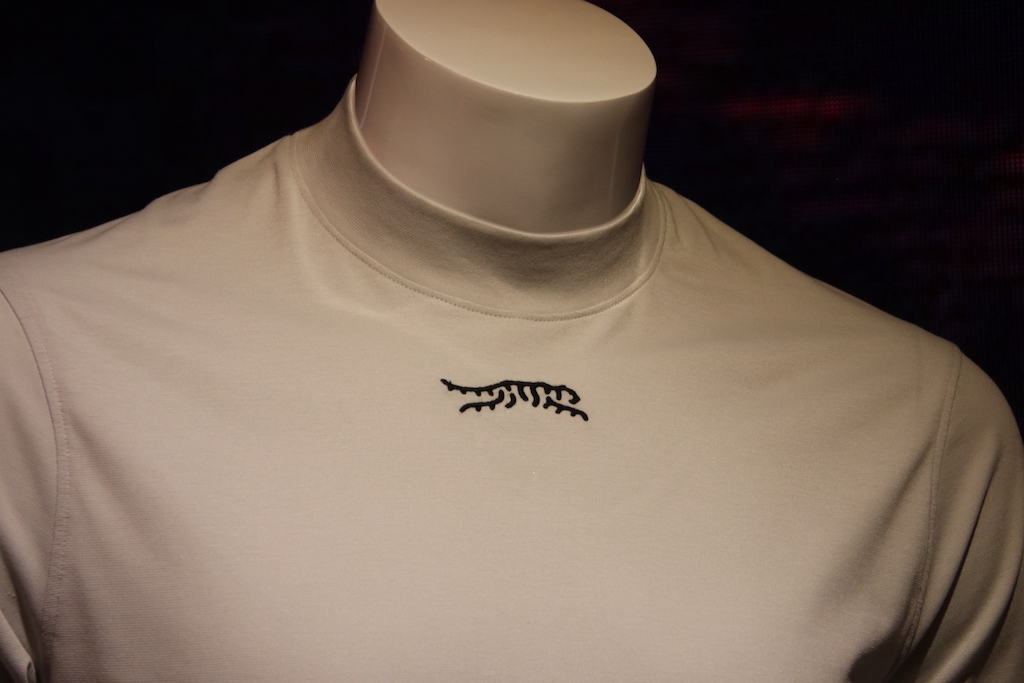
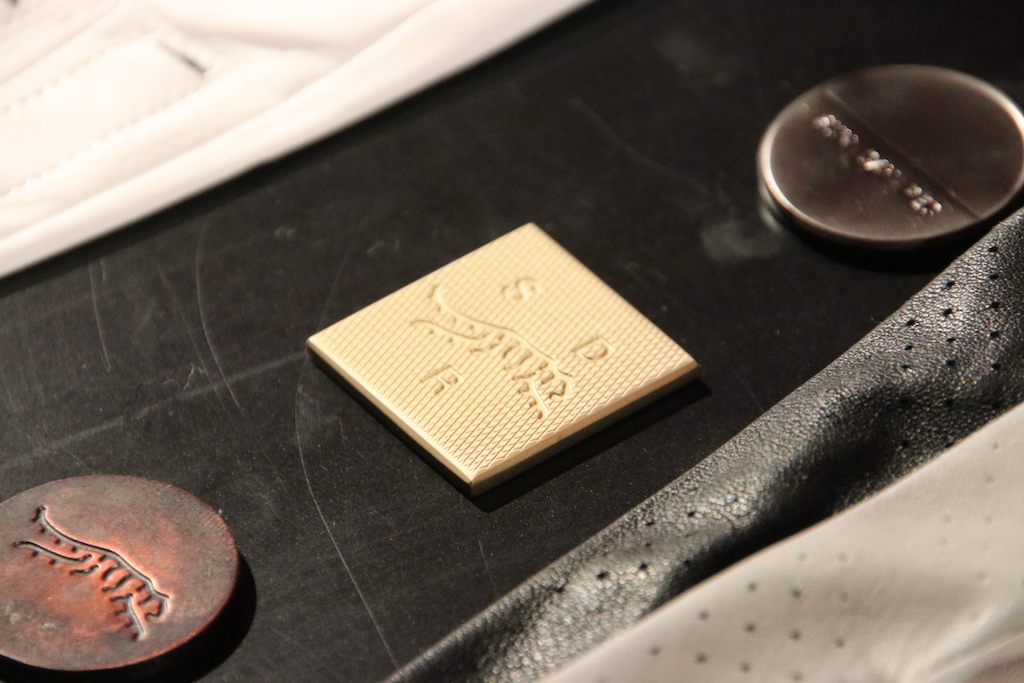
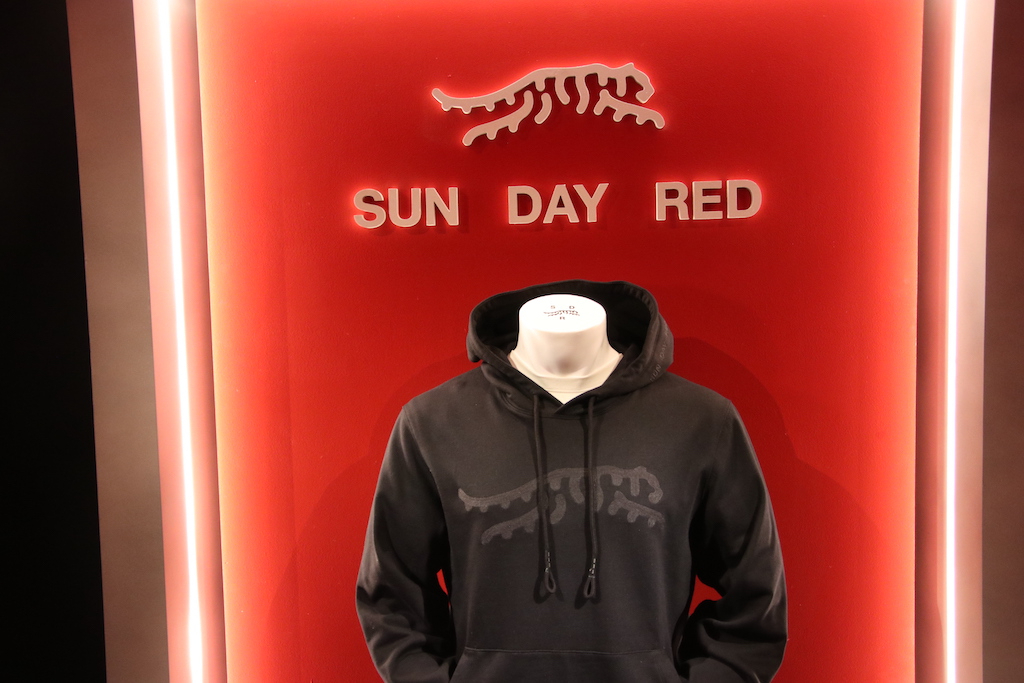
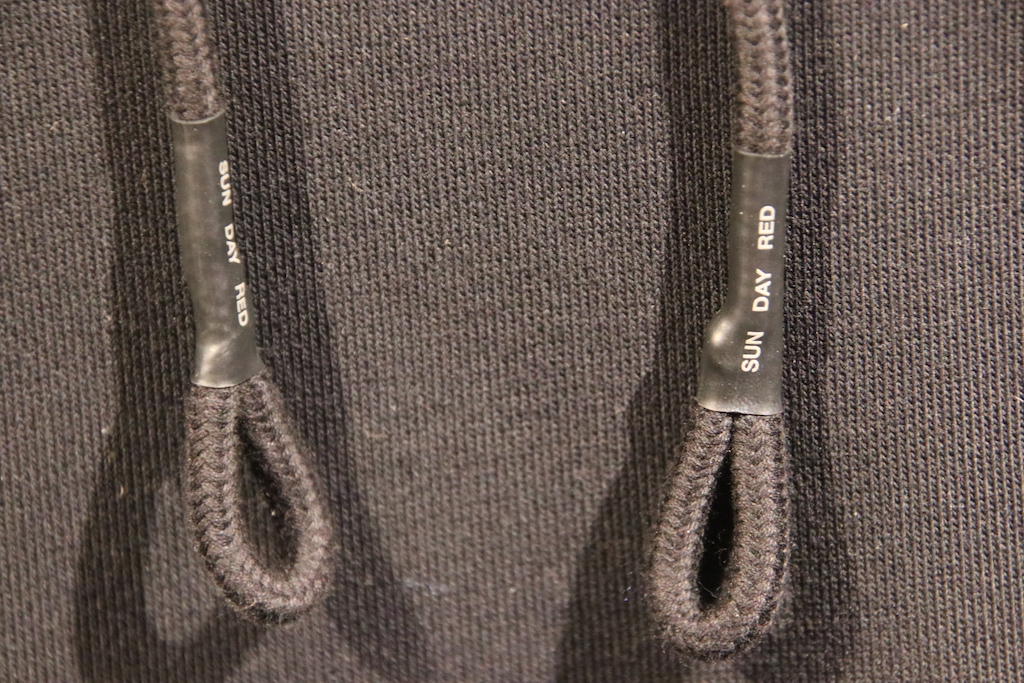
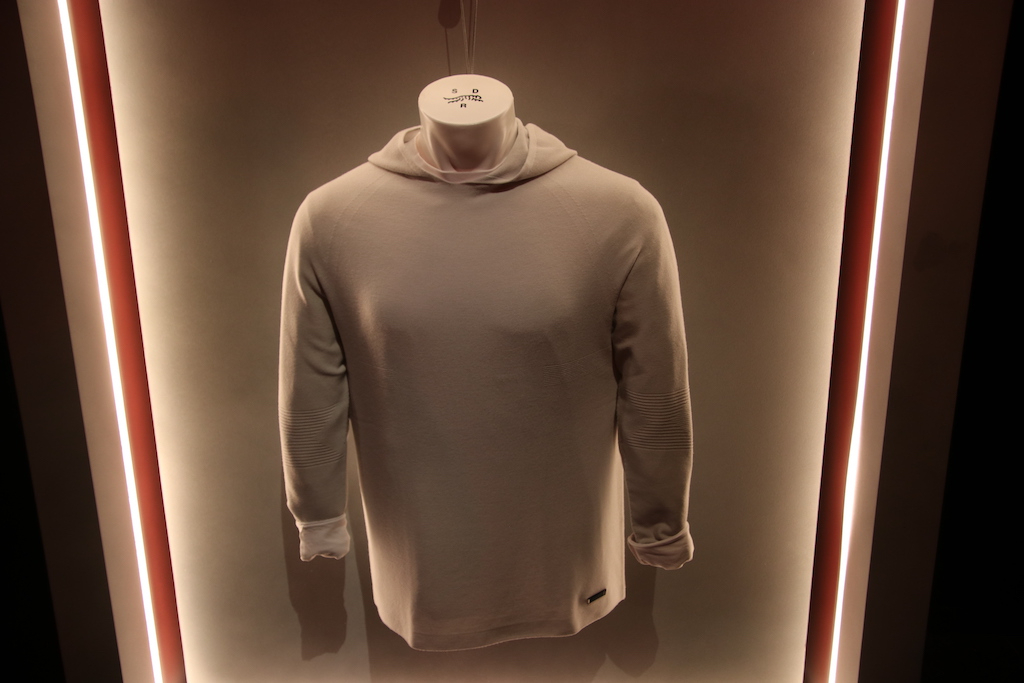





See more photos from the Sun Day Red launch event here
- LIKE114
- LEGIT19
- WOW17
- LOL7
- IDHT2
- FLOP16
- OB4
- SHANK77
Accessory Reviews
GolfWRX Spotlight: Motocaddy M7 Remote and M5 GPS DHC electric cart review

I have been thinking about electric golf push carts, or trollies, ever since I started playing in my league seven years ago.
Motocaddy has been making high-quality electric, and non-electric, carts since 2004 and has a couple of great options for the golfer who loves to walk. Motocaddy was nice enough to get their M7 Remote and M5 GPS DHC in my hands to try out on the course for a few weeks.
I have had a lot of people stop me to ask about the carts, and the one thing I keep telling them is that these carts are just flat out fun to use on the course.

Motocaddy M7 Remote
The M7 Remote was very easy to get set up right out of the box. All you have to do is charge the battery, install the wheels, and you are pretty much ready to go. The M7 folds up pretty small, just a little larger than the 3-wheel pushcart that I had been using for years. Getting it to the course should be no problem with just about any trunk space. Now, the one downside to an electric cart is the weight when moving it around, and both carts come in at around 35 pounds each. Even with that extra weight, I didn’t have much trouble lifting them in and out of the back of a pickup.
The M7 unfolds quickly with the flick of two levers and extends the front wheels automatically. Once unfolded, you drop in the battery, plug it in, and secure your bag. If you own a Motocaddy bag, they have developed a really nice system called EasiLock that involves two metal studs that fit into the bottom of the cart. This system also includes a molded base that prevents the bag from rotating at all, even on the roughest terrain. You can still use the M7 with almost any other golf bag as it includes elastic straps that wrap around the top and bottom of the bag.
As soon as you plug in the battery the LCD screen comes to life and you are ready to go. You can use the M7 without the remote by using the dial on the handle to control the starting, stopping, and speed. But the M7 has a remote that is activated by a simple press of the power button to get going. The remote is very simple with just five buttons to control where the M7 goes.
Getting a feel for the M7 takes no time at all and by the time you drive it from your car to the 1st tee you will be in complete, and confident, control of the cart. You simply press the “+” button to start moving forward and the cart takes off gently without any rattling of your clubs, and you can press that same button again to increase the speed. The cart will go from a slow crawl, for bumpy or tight areas, too, as fast as I could run with just a few presses of the button. The big red “stop” button in the center stops the cart immediately, and when stopped it is locked in place, even on steep hills. You don’t have to worry about remembering to set the brakes or anything because it is done automatically.
Steering is just as easy: simply press the right or left button to turn the cart. Small, quick presses will just slightly adjust the cart as it moves down the fairway while a long hold of the button can make it turn on a dime to the right or left.
Almost everyone asked me how stable the cart was and if it would tip over. I can proudly say that it has stayed upright even on some unseen bumps at maximum speed. Side hills, ruts, and even curbs are handled with ease with the help of the small rear wheel.
I really enjoy strolling down the fairway with nothing but the M7’s remote in my hand — it just makes golfing more fun!
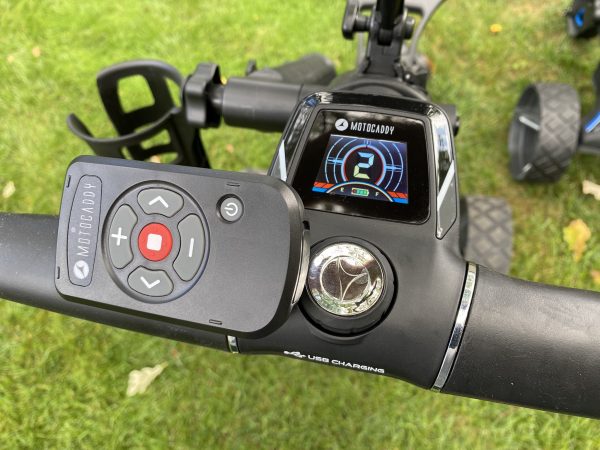
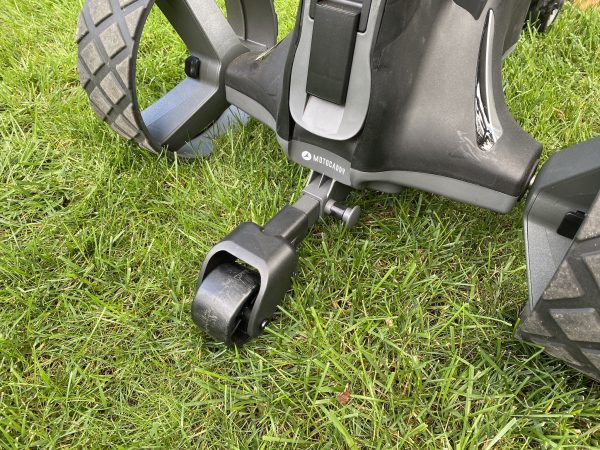
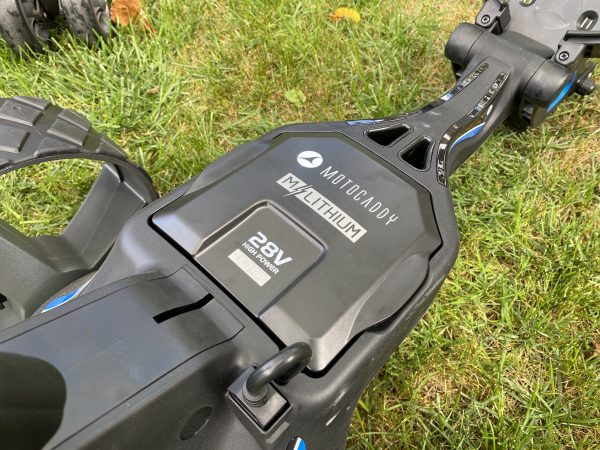
Motocaddy M5 GPS DHC
After using the M7 and its fancy remote, I was a little nervous that I wouldn’t like not having it. But to be honest the M5 was just as fun to use, but for a different reason.
As the name suggests, the M5 has a built-in GPS with 40,000 courses preloaded into it. The screen is a good size, pretty responsive to the touch, and easy to read in direct sunlight. Having the GPS directly on the cart is great, you drive up to your ball and immediately have yardage to the front, back, and center of the green as well as bunkers and hazards. You can easily toggle between screens on the GPS and it offers a couple of different views to help navigate the hole. The M5 can also keep score and let you know shot distances right on the screen. Motocaddy even includes nice little touches like a screen protecter kit to ensure durability.
Driving the M5 is just as easy as the M7 with using the dial on the handle. And speaking of the handle, the grips have a great tacky rubber that grips well even in hot and humid conditions. To start the M5 you just press the dial down and the cart will gently start down the fairway. You can turn the dial to increase or decrease the speed — I found between 5-6 to be the most comfortable for me. But the speed can go up to a very fast pace if you are looking to set a record for fastest round of the day.
As you walk down the fairway, or rough, stopping the cart is as simple as pressing he dial again. When stopped the M5 engages a parking brake automatically so you don’t have to worry about it running down a hill without your approval. The M5 has tons of power to go up just about any hill and the Down Hill Control (DHC) keeps the speed consistent even when going down a steep decent.
Since the M5 has so much power, and it is a little heavy, I thought steering would be a little bit of a challenge. It wasn’t, at all. Guiding the M5 took very little effort and slight adjustments going down the fairway were very easy. Really tight turns took a slight bit more effort as the torque can want to go forward a little more than turn. Again, once you get the M5 from the car to the first tee, you will be a master at driving it.
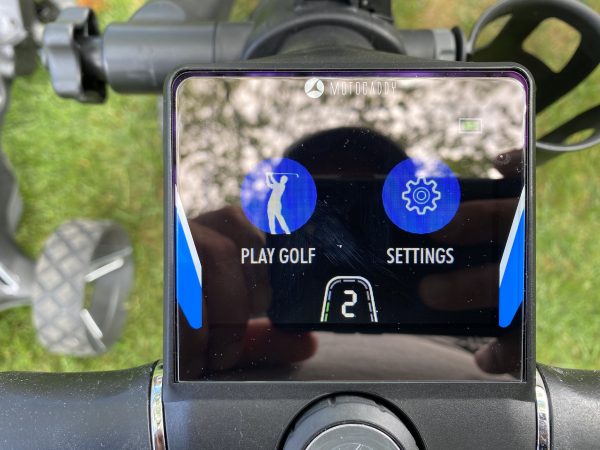
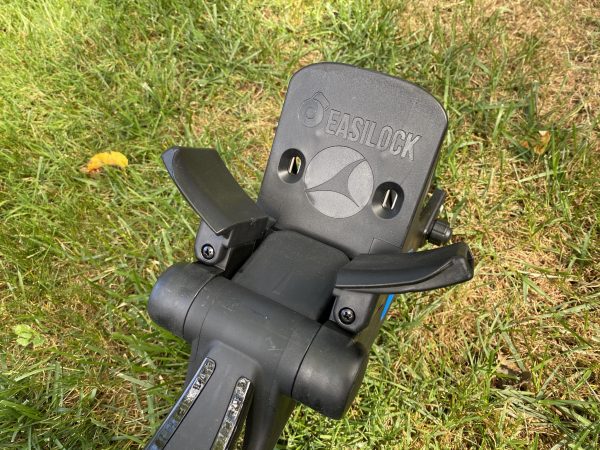
Overall, Motocaddy has created two great carts that provide additional enjoyment to walking your favorite 9 or 18. Having the ability to walk without carrying or pushing your bag, clubs, and whatever else goes with you. I like them so much that it is going to be hard to get the M7’s remote out of my hands when I go play!
- LIKE44
- LEGIT12
- WOW7
- LOL2
- IDHT1
- FLOP5
- OB2
- SHANK5
Accessory Reviews
GolfWRX Spotlight: Crossrope weighted jump rope & app
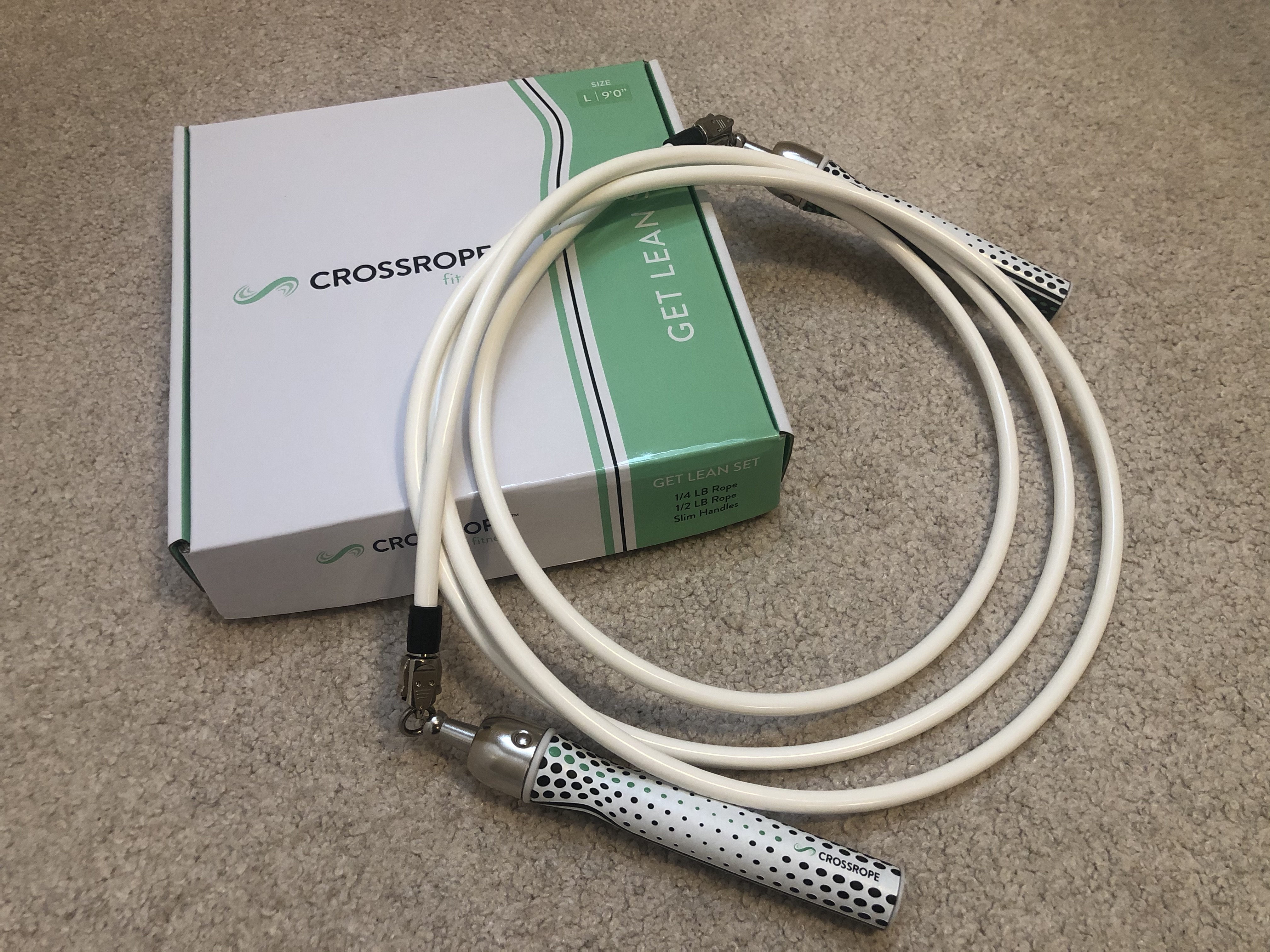
An 18-hole round of golf averages out to just under five miles of walking, which on its own is a good workout. Once you throw in some potential uphill trekking you get some serious cardio too, but if you all looking for a quick workout between rounds of golf look no further than Crossrope.
Crossrope – The details
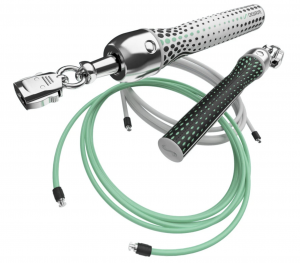
Crossrope is a system of the weighted jump rope that allows you to quickly switch the weight of the ropes you are using to boost your workout—they range from 1/4 lbs all the way up to 2 lbs depending on the kit you start out with. There is an accompanying app that helps you go through multiple workout routines and is available free, or you can upgrade to the entire library of workout routines along with more workout tracking options.
This is NOT your middle school jump rope
The handles are heavy duty and feature precision bearings to allow the rope to move smoothly around as you go through a routine. They are also ergonomic and fit into your hand naturally, which making gripping easy, something that is really nice when you’re swinging a 2 lbs coated steel cable around. The handles also come with a fast clip system to make changing cables depending on your selected workout easier too.
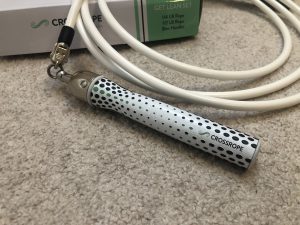
The ropes themselves are made from braided steel and are almost impossible to tangle, allowing them to be easily transported and stored when not in use. All in you are getting a premium piece of workout equipment that is effective and easy to store—hard to same the same thing about a treadmill.
When it comes to a workout, skipping rope is one of the most effective cardio workouts you can do, and with Crossrope, you can get both cardio and low impact weight training when using the heaviest ropes, and follow along with the guided workouts.
As someone that hadn’t used a jump rope in over a decade, starting out lighter was a nice way to ease in before moving up, and I was pleasantly surprised how easy and fun some of the workouts in the app were. If you are looking for a fun way to add something to your workouts, or you just want to try something new to get you into golf course walking shape, this could be right up your alley. To learn more check out crossrope.com
- LIKE5
- LEGIT1
- WOW0
- LOL0
- IDHT0
- FLOP1
- OB1
- SHANK1
-

 19th Hole1 week ago
19th Hole1 week agoDave Portnoy places monstrous outright bet for the 2024 Masters
-

 19th Hole2 weeks ago
19th Hole2 weeks agoThings got heated at the Houston Open between Tony Finau and Alejandro Tosti. Here’s why
-

 19th Hole1 week ago
19th Hole1 week agoTiger Woods arrives at 2024 Masters equipped with a putter that may surprise you
-

 19th Hole2 weeks ago
19th Hole2 weeks agoReport: Tiger Woods has ‘eliminated sex’ in preparation for the 2024 Masters
-

 19th Hole4 days ago
19th Hole4 days agoTwo star names reportedly blanked Jon Rahm all week at the Masters
-

 19th Hole3 days ago
19th Hole3 days agoNeal Shipley presser ends in awkward fashion after reporter claims Tiger handed him note on 8th fairway
-

 19th Hole2 days ago
19th Hole2 days agoReport: LIV Golf identifies latest star name they hope to sign to breakaway tour
-

 19th Hole2 weeks ago
19th Hole2 weeks agoAddiction, spinal fusion, and scam artists – Everything Anthony Kim revealed in candid interview with David Feherty

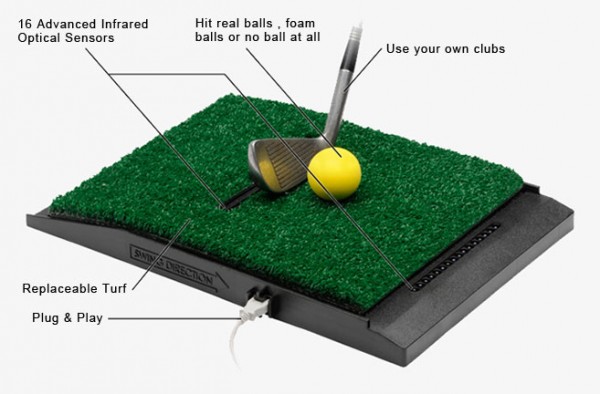
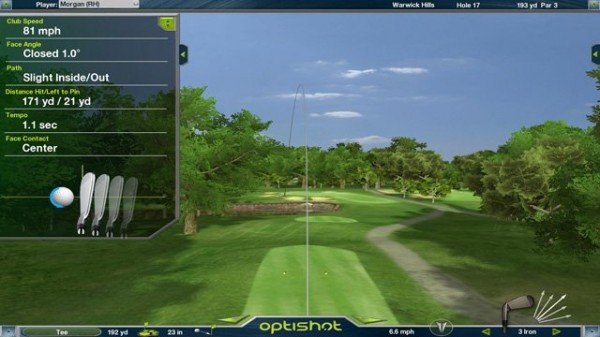















Ryan Shields
Jul 18, 2020 at 9:56 am
Tape on the driver and you are good to go use my r15 with it all the time and is accurate. Evan when I dont want ot to be
Jo
Jan 15, 2016 at 1:46 am
That grate golf training aid
Pingback: I Want To Buy A Golf Simulator | Oak Mont Golf Club
Pingback: Optishot Real Golf Balls | Fair Way Golf Schools
Pingback: Golf Simulators Tampa | Golf Member
chuck
Dec 1, 2014 at 10:46 am
If I buy this product, I would go into it knowing that the ball flight is an assumption. If it measures the clubs path, speed, angles and all thru the impact zone, is there an OPTImal ball position designated? if not, why not?
chuck
Pingback: New Golf Technology: Taking Your Game To The Next Level | masteradvertising.com
Jack
Mar 27, 2014 at 11:51 am
I recently played a full swing simulator at my local golf club on a double widescreen HD projector…and I was extremely impressed by its features and accuracy! I got addicted very quickly!
voytek
Nov 29, 2014 at 4:19 pm
Hi i just got optishot I looking for help to buy projector, please let me know which one I should buy
Ed DeRieu
Jan 11, 2015 at 9:03 am
You can get less resolution ones for less money but the Optima projectors are a great value. The projector in the link is 1080p.
Ed DeRieu
Jan 11, 2015 at 9:27 am
http://www.buydig.com/mobile/product.aspx?sku=ophd25e&ref=pla&omid=103&utm_source=googlepla&utm_medium=cse&utm_item=ophd25e&cawelaid=230005120000068857&cagpspn=pla&catargetid=230005120000544487&cadevice=m&gclid=cjwkeaia28ilbrcy5cxrgtftxtisjabgx7e2i2on8rwwuhbkgxucwqcd4sddzpoy3drptqmttaswfxocd2bw_wcb Copy link
Dom Damiano
Feb 9, 2014 at 2:13 pm
I got the Optishot Infrared Golf Simulator for Christmas. So far I love it. I’m using it with my laptop but would like to hook it up to a projector and use it on my garage wall. Do you have any suggestions on specs for the projector and will the projector shine through my net without any problem? Thank you very much! Dom Damiano
ROGELIO
Sep 30, 2013 at 1:18 pm
Hi, I’ve an Apple Computer, can I install and operate the simulator in this machine?
thank you
Milad
Sep 29, 2014 at 1:42 pm
The bottom hand, Right-hand in rigetihs and the left-hand in us southpaw golfers. The top hand controls and stabilizes the club through the entire swing and impact.
ROGELIO RIQUELMO CORIA HERNANDEZ
Sep 30, 2013 at 1:14 pm
I have an Apple computer, can I install and operate the simulator?
Amadeus
Aug 2, 2013 at 12:18 am
I am poor college student and I love to play golf. The problem is… I can not afford to play. When I do pay to play, it glorious, but even range balls are out of my budget. So I feel that although imagination is needed it could be exceptional for me. For those who have an Optishot, I am unclear on the matter of shot shaping. Is it not possible to play accurate draws, cuts, punch-hooks ect? Or, is it not possible to shape shots at all?
Gary
Sep 26, 2013 at 8:28 pm
Yes, shots can be shaped either way. Optishot measures face angle (closed or open by degrees). It measures swing path by inside/out or outside in all the way to “extreme” swing paths. But it doesn’t quantify that measure. A picture can be shown to show the relative angle of attack.
Sometimes there are results that simply have to be disregarded. I don’t come close to a 154 mph swing but every once in a while that is what is measured if I make a bad swing.
Like Tom, I taped the bottom of my woods with dull black electrical tape. Then along the leading edge I used white electrical tape. Aluminum tape was tried but white seemed to work a bit better. Forums on GolfWRX confirm this.
As far as duribility, I have broken a swing pad with my “digger” swing. The company was very accommodating and sent out a re-ferbed one free of charge. Trouble is that one was cracked also. They sent another one that has been fine for about 6 months.
Thicker and more protective “grass” is available online and on eBay.
Brian G
Jul 23, 2013 at 9:26 pm
As my game improves, I use it less and less. Have never used it to hit balls, because it is totally unrealistic.You are hitting a ball from a curved hard plastic surface, which means you must pick the ball cleanly off the surface. So with an iron, for example you cannot strike the ball with a descending blow, because the head will strike the hard plastic and bounce.The system will say you hit a good stroke. However when you take that stroke out to the range or the course,guess what? No bounce…fat shot. Or you are stroking the ball to pick it off the turf and it’s a skull.
I would say it’s excellent as a game but not to build a good swing. In my opinion you need to practice your swing on a surface that has the give of real turf to be realistic.
Tom Allinder
Mar 28, 2013 at 1:03 pm
I fixed the problem with my woods and hybrids. I went to the auto parts store and found some silver colored tape that was very reflective. I cut strips that were about the size of the bottom of an iron and carefully placed them on the bottom of the driver, three wood and my two hybrids, all of which are new X Hot Callaway products. I get good results now. Before, I had a forged 2 iron I had to use for driver, woods and hybrids like most people seem to have to do.
Errol A
Mar 20, 2013 at 12:48 pm
The Optishot is a cool concept, ive played on one for months at a time, but I switched out for the P3Pro Swing which I use to teach on as well as perfect my draw. The best part, which these guys picked up on as well, is I can use my own clubs! All I have to do is put this thing on the bottom of it, and it was provided in the package when I bought it. For players who are looking to perfect their game, use their own clubs, and not spend $5,000 + you should look into the P3Pro. Best thing I ever purchased for my golf game.
Chris Mack Fisher
Mar 17, 2013 at 12:55 pm
What are the reviewer’s thoughts on the durability of this item? I’m concerned that repeated descending strikes will quickly destroy the pad. And what about movement? Does it stay put or will I constantly have to go grab it from across the room?
Thanks,
Chris
Errol A
Mar 20, 2013 at 12:50 pm
I missed your comment when I posted mine, that is the exact reason I switched, The accuracy and durabillity of the P3Proswing is far greater than the Optishot. Its made of steel, not plastic.
Clark Averill
Jul 11, 2014 at 5:02 pm
I have had an Optishot unit for 2 years..
First, as the review said it is not a Trackman but it does work as advertised. When I first purchased it (used by the way), I purchased a thicker, padded top that allows me to hit down on the ball like I would on the course.
It does a great job of making it closer to real golf and doesn’t damage the unit (as quickly).
Since I live in Minnesota, I use it to practice in the winter. It is surprisingly accurate. Due to ceiling height, I normally don’t hit driver so play most of the courses as par 3. The “practice range” is good, but I normally put the unit on Practice mode on one of the course holes and adjust the yardage to the iron like want to practice.
All in all, if my Optishot broke tomorrow I would order another one the next day.
Pingback: OptiShot Golf Simulator: Editor Review – GolfWRX | Golf Products Reviews